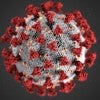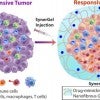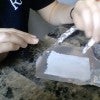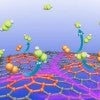
People, papers and presentations April 12, 2021
Nikhil Gattu, a junior kinesiology and chemistry major, has been named the winner of this year’s Undergraduate Scholar Award by the American Kinesiology Association.

People, papers and presentations April 12, 2021
Nikhil Gattu, a junior kinesiology and chemistry major, has been named the winner of this year’s Undergraduate Scholar Award by the American Kinesiology Association.

Bioengineer wins NIH grant to attack cystic fibrosis
Rice chemical and biomolecular engineer Xue Sherry Gao wins a National Institutes of Health grant to develop gene editing to treat cystic fibrosis.

Tires turned into graphene that makes stronger concrete
Rice scientists optimize a process to turn rubber from discarded tires into soluble graphene.

Cancer ‘guardian’ breaks bad with one switch
A mutation that replaces a single amino acid in a potent tumor-suppressing protein makes it prone to nucleating amyloid fibrils implicated in many cancers as well as neurological diseases.

Cerium sidelines silver to make drug precursor
Rice scientists have developed a simplified method to make fluoroketones, a drug precursor that typically requires an expensive silver catalyst.

Theory could accelerate push for spintronic devices
A theory by Rice scientists could boost spintronics, a key to creating faster and more powerful electronic devices, including quantum computers.

DARPA backs Rice sensor to detect COVID-19 virus in air
Researchers receive funding for up to $1 million to develop a real-time electronic sensor able to detect minute amounts of the airborne virus that causes COVID-19 infection.

UTHealth, Rice advance oral cancer immunotherapy
Researchers at Rice and the University of Texas Health Science Center at Houston develop a hydrogel that could destroy oral cancer tumors.

Collagen structures get the royal reveal
An algorithm by Rice University scientists predicts the structures and melting temperatures of collagen, the triple helix that accounts for about a third of the body’s proteins and forms the fibrous glue in skin, bones, muscles, tendons and ligaments.

The game’s afoot in virtual chemistry lab
Members of Rice's Department of Chemistry put forth a video “choose-your-own-adventure” strategy to help undergraduate students conduct virtual experiments.

‘Defective’ carbon simplifies hydrogen peroxide production
Rice scientists introduce a new catalyst to reduce oxygen to widely used hydrogen peroxide.

Study shows why anesthetic stops cell’s walkers in their tracks
Researchers detail the mechanism that allows propofol, a common anesthetic, to halt the movement of kinesin proteins that deliver cargoes to the far reaches of cells.

A little soap simplifies making 2D nanoflakes
The right combination of surfactant, water and processing can maximize the quality of 2D hexagonal boron nitride for such products as antibacterial films.

Rice ‘flashes’ new 2D materials.
Rice scientists extend their technique to produce graphene in a flash to tailor the properties of 2D dichalcogenides, quickly turning them into metastable metallics for electronic and optical applications.